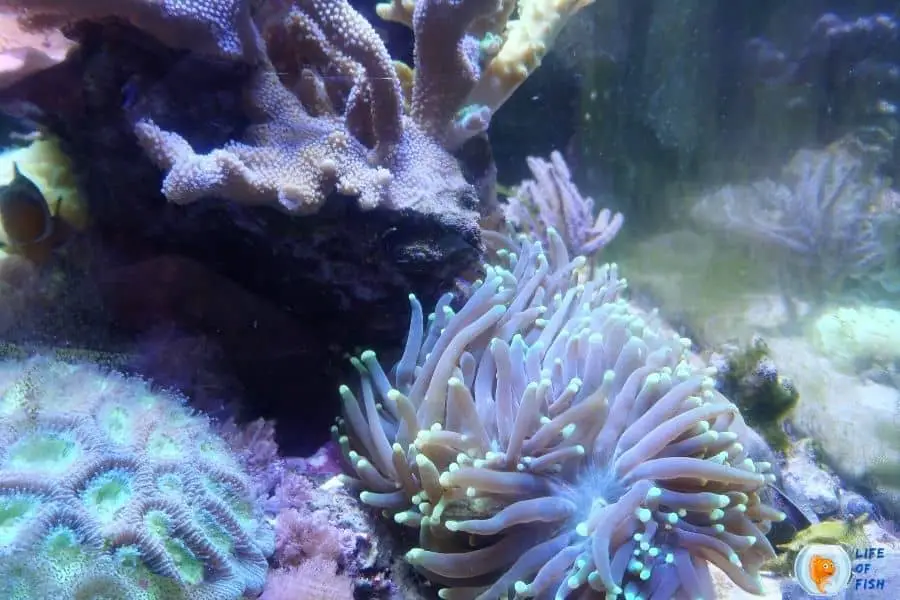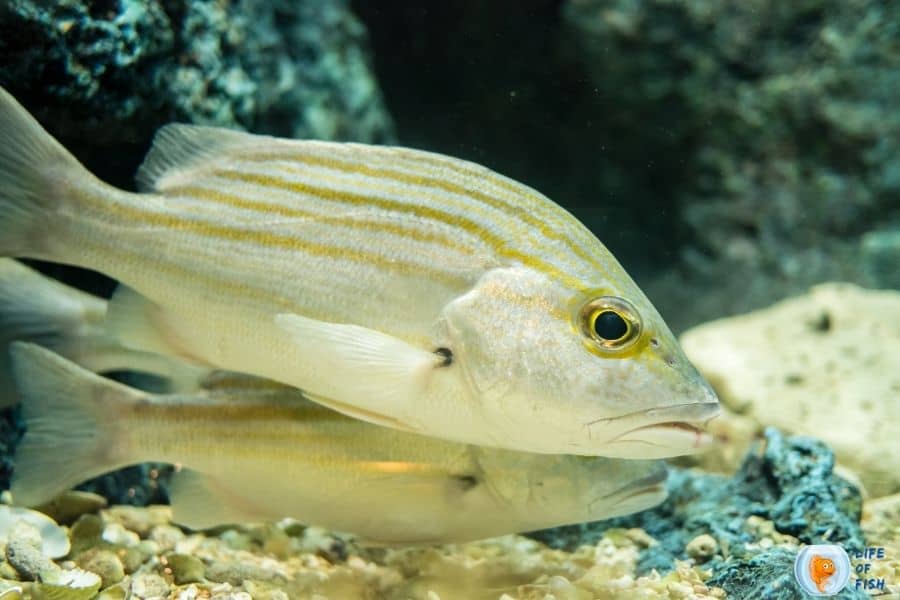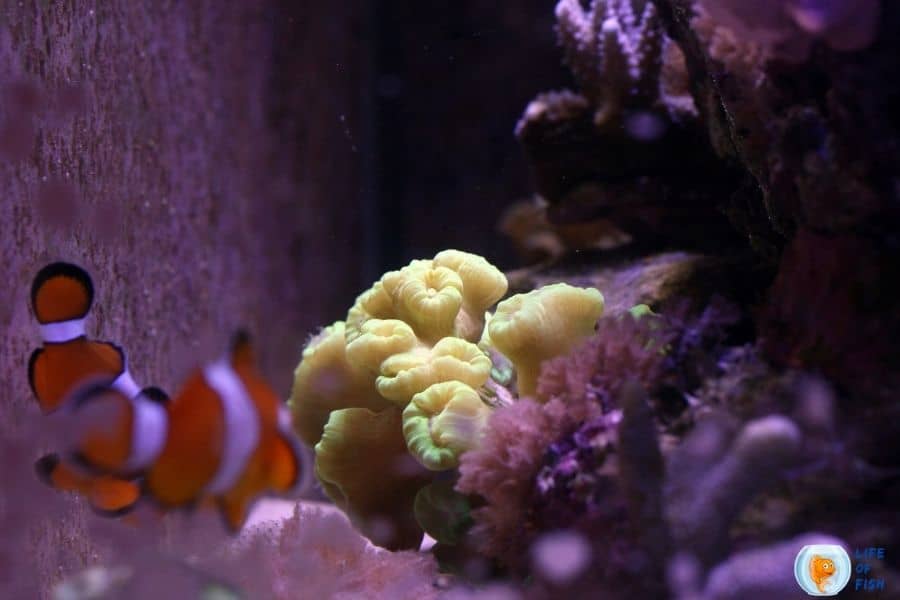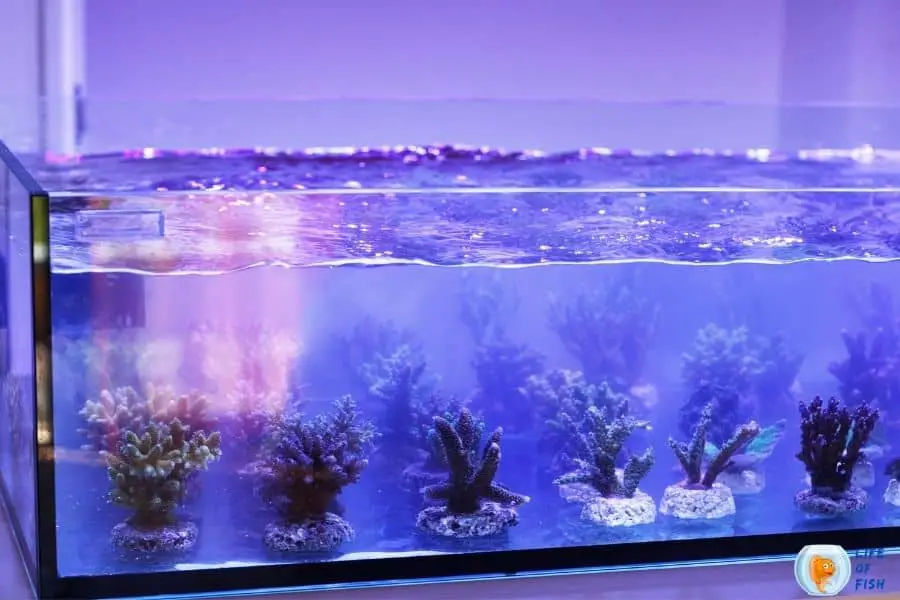What will happen to you if you move into a completely different environment? Indeed, it is hard for you. Isn’t it? Generally, coral is a marine water species. But freshwater dip for coral is a favorite topic among marine water fish hobbyists. So, there are plenty of exciting factors associated with this technique. So, keep reading. You will wonder!

What Is Freshwater Dip?
Jump To
- 1 What Is Freshwater Dip?
- 2 What Does Freshwater Dip Treat?
- 3 Can You do a coral dip In Freshwater?
- 4 Freshwater Dip For Corals: Guide
- 5 Can You Dip Zoas In Freshwater?
- 6 Can You Dip Anemone In Freshwater?
- 7 Can You Dip Plate Coral?
- 8 Freshwater Dip Mushroom Coral
- 9 Can I Dip Coral In Iodine Water?
- 10 What Does A Freshwater Dipping Do To Saltwater Fish?
Freshwater dip or freshwater bath is a method to kill external parasites through osmotic shock. This method is widely used for saltwater creatures, commonly saltwater fish. Ornamental creatures, like marine fish, may contain thousands of parasites. As an aquarist, adding pest-free fish into an established aquarium is a challenge. So, in this method, when you dip fish into the freshwater, water enters or defuses the parasite’s body.
Then it causes to swell and burst parasite. Because the parasite is unable to tolerate this shock called osmotic stress. For instance, relatively, most marine water fish can tolerate brief exposure to freshwater than parasites. But doing this at your own discretion can have dire consequences. Freshwater dip helps relieve symptoms and decrease the number of parasites on marine water creatures’ bodies.
Here are some parasites that can prevent by marine creatures from the freshwater dip.
- Black ich
- Flukes
- Brooklynella hostilis
- Amyloodinium (velvet disease)
- Uronema marinum
But another special thing is, that this treatment does not show good results for bacterial, fungus, and viral infections. Meanwhile, l know the question that is in your mind. Can freshwater fish or creatures tolerate this osmotic stress when they dip in saltwater? Simply, the answer is yes, but not for a long time. Freshwater aquarists do the same practice and dip freshwater fish in salty water (35ppt) for a short time. It will help to remove external parasites from fish bodies.
What Does Freshwater Dip Treat?
Freshwater dip or freshwater bath can treat the saltwater fish’s gills and skin for several common parasites like flatworms, Ich or Cryptocaryon, Brooklynella, skin flukes, velvet, and Amyloodinium.
Special note: Generally, when you introduce a new creature to your tank, the main priority is to quarantine them before adding them to the main aquarium. So, at this time freshwater dip technique is an excellent practice to follow before the quarantine. It will help to reduce the risk of external parasites.

Can You do a coral dip In Freshwater?
The answer depends on the coral type. I know you are wondering because corals are saltwater creatures. So, is it actually safe to dip them in freshwater? And if it can, how? They are generally dipping corals into freshwater support to remove parasites and pests. Not only that, freshwater dip support to treatment of many infections and conditions of corals. But most corals tend to stress in freshwater. However, some coral types like Zoas or Zoanthids can tolerate freshwater dip, but for a short time. You can do a quick dip.
On the other hand, some varieties of corals do not react well to freshwater dip. For instance, SPS corals are very sensitive. Thus, they do not react to a freshwater well. But you can find exceptions. Some hobbyists mention that they get benefits from freshwater dip by removing parasites from SPS corals successfully.
Most probably, in this case, they do freshwater dip to hardy soft corals. It can conclude that the response of these corals to freshwater depends on their health. And, of course, you should be highly aware of the coral variety that you purchased. It will help to decide whether your coral can tolerate the freshwater dip or not.
Freshwater Dip For Corals: Guide
To do this, you have to go with a few steps.
Step 1: Firstly, be aware of your coral species and whether it can go with the fw dip or not.
Step 2: Prepare a bowl or small container and fill it with fresh water. The bawl should be enough to submerge your coral. Freshwater should be the same as room temperature. Additionally, if you can set the preferable pH of the particular coral species, it should be better.
Step 3: Float your coral in freshwater and acclimate it. In this step, you can float the coral in your quarantine tank with the initially arrived bag. This step is crucial because coral can stress due to abrupt water changes. Consequently, the stress leads to weak the coral’s immune system and will cause susceptibility to more diseases.
Step 4: After 10 to 15 minutes of float, you can dip the coral in freshwater. This process is quite easy. Basically, parasites that are climbing onto the coral are less hard compared with corals. So, they will most likely suddenly die when they transition to freshwater.
Further, there is no standard duration that dips corals in freshwater. It depends. But my recommendation is, do not to dip corals for more than one or two minutes. Here you should highly consider the healthy level of the coral. A short dip leads to a low amount of stress on coral. On the other hand, a long dip gives high stress and increases the chance of killing parasites. But do not try to give high stress to your corals. Because they are susceptible. However, if you give high stress to kill more parasites, that will cause you to bleach and kill your coral.

Can You Dip Zoas In Freshwater?
Simply, the answer is yes. When compared with other saltwater animals, Zoas is a hardy and tiny saltwater creature. Many corals do not react to freshwater dips well. But exceptionally, many hobbyists found that the Zoas are able to tolerate freshwater dipping. But for a short time. So, do not try to dip them in fresh water for a long time. Here we only need to give a little bit of shock to your coral to outweigh the risk.
When considering the ideal duration that you should dip Zoas in freshwater, there is no standard time. It totally depends on the nature and the health of your Zoas. Some Zoas keepers go with freshwater dip for 2 to 3 minutes. But some others hold their Zoas up to about 15 minutes. But my recommendation is, it is the first freshwater dip of your Zoa, do not hold them for more than 1 to 2 minutes.
Can You Dip Anemone In Freshwater?
Yes, you can dip anemone in freshwater, but it will depend on the species. So, it would be best if you considered the variety and its sensitivity level.
Can You Dip Plate Coral?
As above questions, yes, you can dip your plate coral in freshwater. But you are highly aware of your plate coral species and whether they can or cannot tolerate the freshwater. If your plate coral species can dip in fresh water, do not go for a long dip because almost every coral is pretty sensitive.
Freshwater Dip Mushroom Coral
You can dip mushroom corals in freshwater. It helps to protect your mushrooms from pests and parasites. But here also you should consider the species that you have. Further, you should consider the nature of your coral. Here according to my experience, the 3 to 7 minutes dip is better.
Can I Dip Coral In Iodine Water?
Yes, you can dip coral in iodine water. There are many benefits of iodine dip on corals. For instance, basically, it is a better treatment for many infections. Of course, you can follow simple steps to protect your coral.
Step 1: Take a bowl and fill it with water
Step 2: Then add iodine and mix it with water
There are suitable ratios when mixing iodine with water. So, I below mention my recommendations.
- If you have chalices/ LPSs and corals, you can add 1ml to 1.5ml of iodine to one cup of water
- But mix 1.5 ml to 2ml with one cup of water for your Zoas
Step 3: After dip your coral
This is a good treatment, but it is not good to dip your corals in them for a long time. If you go for a long dip, it surely badly affects your coral.
- The recommendation for LPS corals is dipping for 3 to 20 minutes. But this time depends on the LPS coral species you have.
- Chalices get dipped for around 3 to 19 minutes.
- However, if you have an anemone, the recommended duration is 5 to 15 minutes.
- Similarly, Zoea gets dipped for 3o minutes or longer

What Does A Freshwater Dipping Do To Saltwater Fish?
When saltwater fish dip into freshwater, they have to face osmotic stress. However, fish can tolerate this stress more than parasites. So, the freshwater dip technique kills and removes the parasites and pests from the fish and protects them from many infections. Now you are wondering what is this osmotic stress. Generally, any fish maintain an internal balance of salt and water in its body.
This is called osmoregulation. Whether the fish is freshwater or saltwater, there is a difference between the water and salinity of the fish’s body and the environment. There are different salt and water concentrations on the outside and inside of the fish’s membrane skin. However, nature always tries to balance both sides. Here, salt ions move towards the weaker salt solution through the semipermeable membrane (fish’s skin).
On the other hand, the water tries to move the opposite side and dilute the stronger salt solution by osmosis. So, fish use osmoregulation to fight to survive from osmosis and diffusion by maintaining the internal balance of salt and water. So, there is more salt and less water outside the fish’s body in the marine environment. As a result, there is a probability of taking on salt and losing water.
But the fish fight against this process to survive by drinking vast amounts of water and urinating a little. Also, they eliminate salt from special cells in the gills. Further, saltwater fish does not absorb any salt from the water that they drink. Typically, a saltwater fish’s body is formulated for this process. So, when these fish dip in freshwater, they stress, and it is called osmotic stress. This process is also caused to parasites. But they can not tolerate the osmotic stress.
Read Next: How Do Starfish Reproduce? | 14 Useful Facts From Experts |
